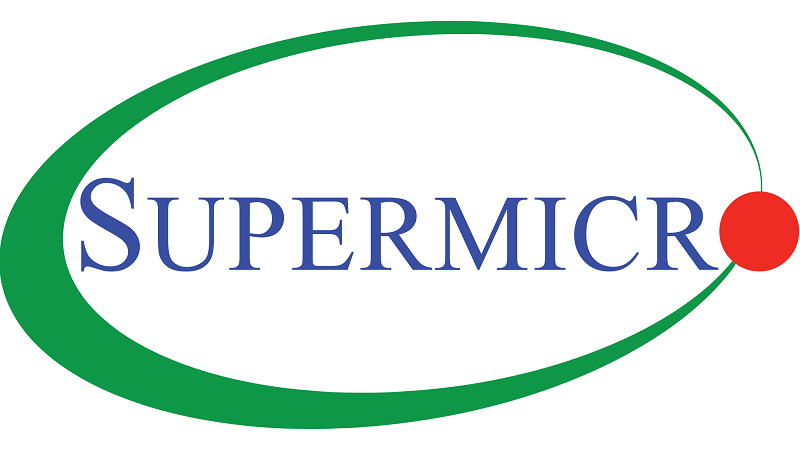超微电脑(SMCI.US)2025财年第三季度业绩电话会
文章语言:
简
繁
EN
Share
Minutes
原文
会议摘要
Super Microcomputer Inc. reported a Q3 2025 net revenue of $4.6 billion, below forecast due to customers awaiting AI platform evaluations, causing delayed commitments. The decline was exacerbated by an inventory write-down of old generation GPU components. Despite this, the company is confident in meeting long-term growth targets, anticipating engagements to materialize in later quarters. Super Microcomputer regained regulatory compliance, advanced technical innovation, and delivered new AI platforms. Upcoming is the BC BBS data center solution featuring BLC 2 liquid cooling technology, aimed at reducing build time and costs while enhancing performance. The company projects Q4 revenue of at least $6 billion and maintains confidence in its strong growth and market position, despite uncertainties. The Q&A addressed impacts of tariffs, demand outlook, product differences, customization value, customer contributions, AI diffusion rules, and gross margin expectations.
会议速览
The call discusses Super Microcomputer Inc.'s third quarter and full-year 2025 earnings, featuring remarks from the CEO and CFO, with a Q&A session planned for analysts.
The company reported a fiscal Q3 net revenue of $4.6 billion, below forecast due to customer anticipation of new AI platforms. Despite this, there's confidence in meeting long-term growth targets with expected materialization of engagements in the June and September quarters. Key highlights include the successful delivery of new generation AI platforms, volume shipment of AI systems, and the introduction of innovative data center building block solutions (DC BBS) featuring second-generation system liquid cooling technology (BLC 2). The company emphasizes its commitment to technological innovation, green computing, and expanding global operations, while anticipating Q4 revenue of at least $6 billion.
Fiscal Q3 2025 revenues reached $4.6 billion, up 19% year over year but down 19% quarter over quarter due to customer platform decisions delaying sales. AI GPU platforms accounted for over 70% of revenues, with robust growth expected in Q4 as production ramps up for data center solutions. Enterprise Channel vertical revenues increased by 38% quarter over quarter, while OEM appliance and large data center vertical revenues saw a 38% decline. The company is closely monitoring the macro and tariff environment while maintaining a flexible global manufacturing footprint.
The Q3 non-GAAP gross margin declined to 9.7% due to higher inventory reserves, lower volume, and accelerated costs for new products. Operating expenses decreased quarter-over-quarter but increased year-over-year. The GAAP effective tax rate was 5.1%, and the non-GAAP effective tax rate was 15.5%. Cash flow from operations improved significantly, and the net cash position turned positive. Key working capital metrics, including the cash conversion cycle, days of inventory, days sales outstanding, and days payable outstanding, showed mixed results.
The company anticipates net sales between $5.6 to $6.4 billion for Q4 FY2025, with diluted net income per share around forty-something. Gross margins are expected to be roughly 10%, GAAP operating expenses at $319 million, and CapEx in the range of $45 to $55 million. Full-year revenues are projected between $21.8 to $22.6 billion.
Despite macroeconomic uncertainties and concerns over tariffs affecting customer sentiment, the company anticipates a strong June quarter due to robust orders and expects even stronger growth in the next fiscal year, driven by new product volumes in production.
The discussion highlights concerns over margins due to cautiousness in ramping new products, influenced by tariff uncertainties and the transition in technology platforms, alongside a challenging pricing environment for specific products.
The transition from older platforms to new ones, such as from Hopper to Blackwell, is causing headwinds for gross margin due to increased price competition and delayed decision-making. Tariff uncertainty further prompts cautious margin expectation setting.
The company expresses confidence in its midterm and long-term growth, particularly in its product line and upcoming data center solutions, despite not providing fiscal year 26 guidance due to current macroeconomic uncertainties and tariff impacts. Strong customer interest is noted, alongside distinctions in demand between different product offerings, influenced by factors such as data center cooling solutions readiness.
The speaker discusses the value addition and customization benefits of Super Micro's GP 300, highlighting strong demand expectations and technological advantages. They also address fluctuations in top customer contributions, attributing it to shipment timing rather than a concerning trend.
Despite previous cash flow impacts due to delays, the business anticipates faster growth in the coming quarters, leveraging improved cash flow and technology advancements.
Despite concerns over tariffs and AI diffusion potentially affecting revenues, the speaker highlights continued growth in demand, leading to facility expansions in the USA, Taiwan, and Malaysia.
The speaker discusses navigating headwinds such as diffusion rules and tariffs, emphasizing their strong market position due to a majority of business from US customers and being a first-to-market provider. They refrain from providing next year's forecasts but highlight their target margins and competitive edge.
The speaker inquires about the expected sequential growth in the September quarter due to the ongoing ramp at Blackwell Supply, referencing past quarters' growth rates and seeking insight into potential future increases.
The discussion highlights the successful implementation and future promotion of a second-generation liquid cooling technology, aimed at improving data center efficiency, reliability, and performance while reducing power, water usage, and costs. With over 4000 units already in the market, the company is confident in its deep cooling technology and plans to significantly expand its offerings, targeting benefits for customers and environmental sustainability.
The inventory reserve in the March quarter reduced margins by 220 basis points, primarily due to older products. The company anticipates a lesser impact in the June quarter, possibly around 100 basis points or less, and expects it to close to zero by the September quarter. This reserve reflects the need to adjust for the shift towards newer platforms, impacting expected revenues and necessitating the sale of older inventory at more competitive prices.
The customer base, characterized by technology-leading companies sensitive to new products, is excited about the ready solution, prompting a shift from Hopper to Blackwell due to design, demand, or performance considerations.
The company highlights its advantage in manufacturing operations within the US, particularly in Silicon Valley, enabling quicker response to new technologies and efficient operations. Despite ongoing tariff uncertainties, the company maintains readiness to adjust logistics and operations for optimal customer solutions, leveraging its strong presence in the US, Taiwan, and Malaysia.
The speaker inquires about supplier allocations for GPU products, noting a comparison between Blackwell and Hopper. They discuss improvements in allocation methods and constraints due to increased market competition.
A question is raised regarding the apparent discrepancy between stable capacity levels and aggressive capital expenditure, seeking clarification on how the CapEx relates to the existing capacity.
The company boasts a significant monthly capacity of $5000, with flexibility to convert resources for high-performance tasks. Anticipating higher demand, they're prepared with advanced cooling solutions, particularly for LC 2, marking a mature and efficient phase.
The discussion revolves around the comparison of monthly rights from 5000 units six months ago to the present, along with plans for growth in Taiwan and Malaysia, with full enablement in Malaysia expected by year-end.
As the company expands, there's a growing need for additional manpower, prompting an aggressive search for new talent, including a share well position, to support continued growth.
要点回答
Q:How did Super Micro's non-GAAP earnings per share (EPS) compare to the prior year?
A:Super Micro's non-GAAP EPS stood at 31 cents per share compared to 66 cents last year. The decline was largely driven by an inventory write-down of old-generation GPU and related components.
Q:What major new innovations is Super Micro set to introduce in the current quarter and the new fiscal year?
A:Super Micro is set to introduce major new innovations in the current quarter and the new fiscal year, especially with their new AI platforms, including the DCB with its time to market advantage, leading position in AI infrastructure technology, and new offerings like AMD M1320 and Nvidia B300 and T3000 series.
Q:What is the new data center building block solution that Super Micro is launching?
A:Super Micro is launching a new data center building block solution named BC BBS, which features second-generation system liquid cooling technology called BLC 2. It is designed to dramatically shorten the time to build a data center, reduce costs, and improve performance and availability.
Q:What are the benefits of Super Micro's new BC BBS solution?
A:The benefits of Super Micro's new BC BBS solution include reducing power consumption, optimal space, decreasing water usage, delivering up to 30% lower total cost of ownership (TCO), accelerating new data center deployments, and upgrading existing data centers in a matter of months or weeks instead of many quarters or years.
Q:What are the expected Q4 revenues and production ramp-up?
A:The speaker is confident that the company will close the fiscal year on a strong note with Q4 revenue of at least $6 billion and plans to resume a broader forecast range once they have better visibility.
Q:How did Q3 2025 revenues compare to the previous year and quarter?
A:Fiscal Q3 2025 revenues were $4.6 billion, up 19% year over year and down 19% quarter over quarter.
Q:Which segments contributed to Q3 revenues and how did they compare to the prior quarter and year?
A:Q3 revenues were down quarter over quarter due to certain new platform decisions by customers moving sales into subsequent quarters. However, AI GPU platforms still represented more than 70% of revenues with growth across both the enterprise and cloud service provider markets.
Q:What is the geographical breakdown of Q3 revenues?
A:The US represented 60% of Q3 revenues, Asia 30%, Europe 6%, and the rest of the world 4%. Year over year, US revenues increased 7%, Asia increased 76%, Europe decreased 69%, and the rest of the world increased 45%.
Q:What is the expected impact of the inventory reserve adjustments on Q3 results?
A:Higher inventory reserves for older generation products, lower volume, and accelerated costs to enable time to market for new products led to the decrease in non-GAAP Q3 gross margin.
Q:What were the changes in operating expenses from Q2 to Q3?
A:Q3 operating expenses on a GAAP basis decreased 3% quarter over quarter and increased 34% year over year to $293 million. On a non-GAAP basis, expenses decreased 5% quarter over quarter and increased 30% year over year to $216 million.
Q:What is the projected GAAP diluted EPS for Q4 and what are the other financial expectations?
A:GAAP diluted EPS for Q4 is projected to be around $0.17, with GAAP operating expenses estimated to be about $319 million. The projected fully diluted GAAP EPS includes approximately $63 million in stock compensation expenses and a GAAP tax rate of 14.9%.
Q:What is the guidance for the fourth quarter in terms of net sales and diluted net income per share?
A:The company expects net sales in the range of $5.6 to $6.4 billion and diluted net income per share in the range of $0.56 to $0.64 for the fourth quarter, anticipating gross margins to be approximately 10%.
Q:What is the expected CapEx for Q4 and the full fiscal year 2025?
A:The expected CapEx for Q4 is in the range of $45 million to $55 million, and for the full fiscal year 2025, it is based on the Q4 guidance with revenues of $21.8 to $22.6 billion.
Q:What are the customers' reactions to the macroeconomic challenges and forecasting difficulties?
A:Customers are showing some reluctance to order due to the macroeconomic challenges and the forecast difficulties caused by the tariffs and overall economic uncertainty. However, the company continues to see strong order patterns and expects a robust June quarter and even stronger growth in the following fiscal year due to new products, especially those in volume production.
Q:What is the expected impact of new products on the company's revenue growth?
A:The company anticipates that the new products, particularly those in volume production like Blackwell, will contribute to strong revenue growth in June and into the next fiscal year. The continued roll-out of new products is expected to improve the company's financial performance and contribute to an even stronger quarter in September.
Q:What is causing the change in the pricing market for new products and the general cautiousness in gross margin expectations?
A:The change in the pricing market for new products is influenced by concerns related to tariffs and a general conservatism in the approach to pricing. Additionally, the transition from Hopper to Blackwell has impacted pricing, along with the delayed decisions due to technology platform changes, which has resulted in a more cautious approach to setting gross margin expectations.
Q:Are there differences in customer demand or the ability to fulfill demand between HGX and MVL 72 racks?
A:The company observes strong demand for the 200 M 72 P1 product; however, customer demand for cooling data centers is lower, leading to a delay in those purchases. The solution involving the BC BBS data center building blocks is expected to be ready soon and is anticipated to improve the situation with customer fulfillment.
Q:What is the potential value proposition of the GB 300 compared to Supermicro in terms of customization and services?
A:The GB 300 is expected to have a strong demand due to its competitive advantage and the maturity of its solutions. Supermicro believes the GB 300 will be very successful, given its technology and the strong demand indicated for similar products like the P2 and HGX systems. The company's commitment to technology advancement and solution quality is highlighted as a key factor in the GB 300's potential success.
Q:Why did the combined percentage of the two top customers decline in the current quarter compared to the previous quarter?
A:The decline in the combined percentage of the two top customers is attributed to the timing of shipments, rather than any trend. There is no concern about a decrease in customer contribution.
Q:What is the outlook for the top 2 customers' contribution in the next few quarters?
A:The company believes its business will continue to grow at a faster rate in the coming quarters. While there was an impact from cash flow delays in the December and March quarters, that situation is behind them now, and they have better cash flow and are ready to grow more quickly, especially with technological advancements.
Q:How is the company responding to the uncertainty around tariffs and the impact on AI diffusion rules?
A:Despite the uncertainty around tariffs and the potential impact of AI diffusion rules, the company continues to see demand growth. They are expanding facilities in the USA, Taiwan, and Malaysia, and remain confident in their technology's future, expecting continued growth as a result.
Q:What are the expected headwinds affecting gross margins in the upcoming fiscal year?
A:The expected headwinds include the impact of new tariffs and the diffusion rules coming up in mid-May, which are seen as challenges for maintaining high gross margins.
Q:What is the expected reduction in inventory reserves for the June quarter and how does it relate to the 10% gross margin guidance?
A:The inventory reserve for the June quarter is expected to be around 100 basis points or less, and it is part of the 10% gross margin guidance for that quarter.
Q:What factors contributed to the reduced margins in the March quarter?
A:The reduced margins in the March quarter were primarily caused by taking a reserve for older inventory products, which impacted the margins by about 220 basis points.
Q:Why were some revenues from Q3 impacted by platform decisions and what does this imply for future sales?
A:Some revenues from Q3 were impacted by platform decisions because customers were shifting to newer platforms. This implies that future sales might be affected as customers may change their minds on platform choices, requiring the company to take reserves for those products and possibly sell them at lower prices.
Q:What differentiates your customer base and how does it affect your product launches?
A:The customer base is comprised mostly of technology-leading companies, which makes new product solutions very sensitive to their needs. This differentiation affects product launches as the new solution is already ready and there is an excitement to ramp it up.
Q:How is US domestic manufacturing positioned in relation to competitors and what is the advantage of having operations in multiple countries?
A:Being a USA company with operations in Silicon Valley, the company can respond to new technology quickly and efficiently, providing better performance and solutions like TLC 2. Having operations in the US, Taiwan, and Malaysia allows for flexibility when tariffs are in place, and the company is watching closely to adjust logistics and operations accordingly.
Q:Are you facing the same GPU allocations for Blackwell as you have for Hopper, and how has supply changed with more competitors in the market?
A:There are still some allocation methods in place for Blackwell, and the supply situation has somewhat improved but remains constrained. As more competitors enter the market, supply conditions are constantly evolving.
Q:How does the current capacity of 5000 per month compare to 6 months ago and what is the potential impact of the expansion in Taiwan and Malaysia?
A:Six months ago, the capacity was also 5000 per month. With the expansion in Taiwan and Malaysia, the company is growing and preparing for a demand ramp-up. Malaysia's production capabilities are expected to be fully enabled by the end of the year, contributing to an increase in capacity.






